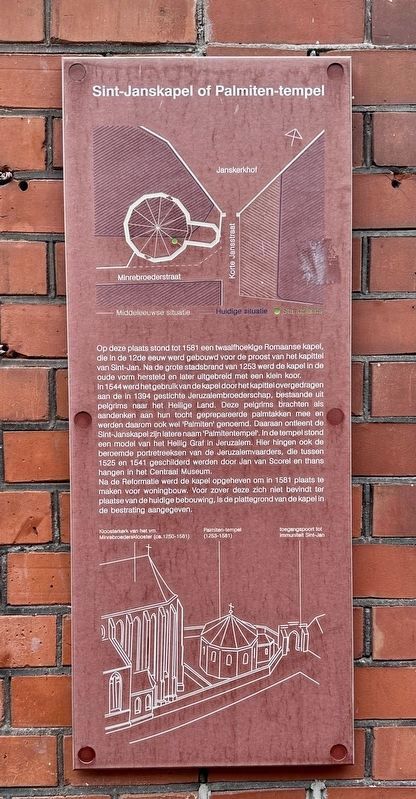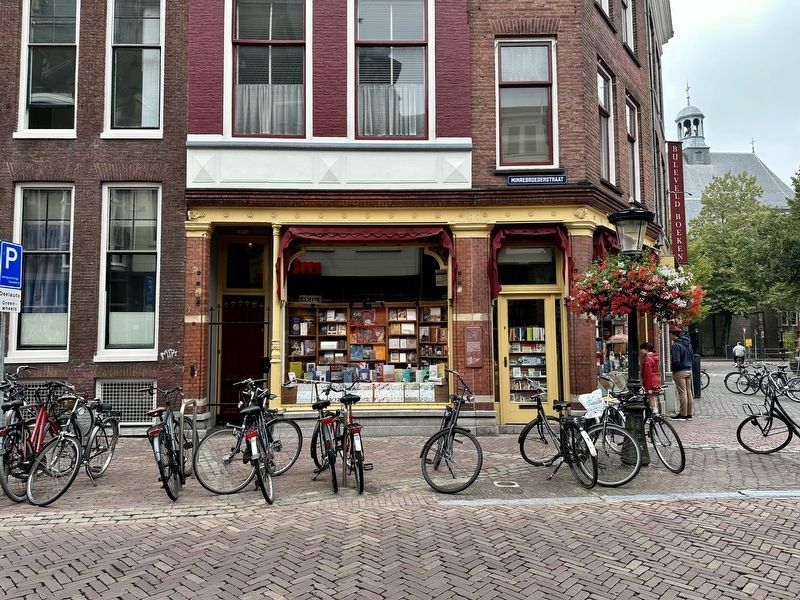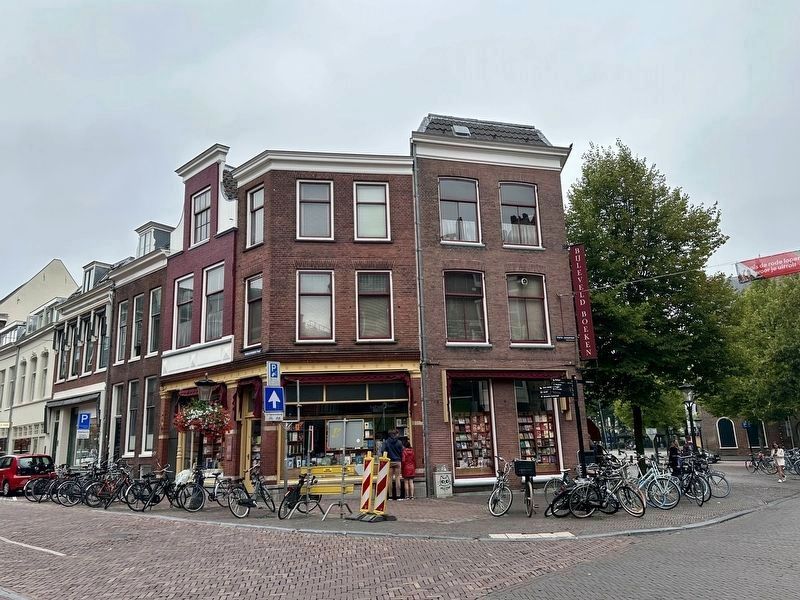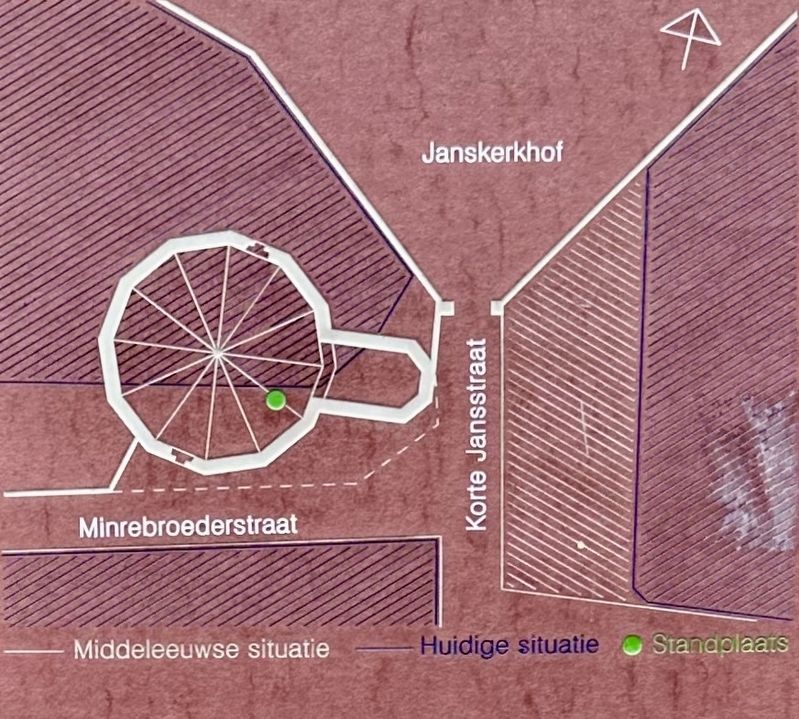Binnenstad in Utrecht, Netherlands — Northwestern Europe
Sint-Janskapel of Palmiten-tempel / Saint Johns Chapel or Palmite Temple
Inscription.
Until 1581, a twelve-sided Romanesque chapel stood on this site, which was built in the 12th century for the provost of the chapter of St. John. After the great city fire of 1263, the chapel was restored to its old form and later expanded with a small choir. In 1544, the use of the chapel was transferred by the chapter to the Jerusalem Brotherhood, founded in 1394, consisting of pilgrims to the Holy Land. These pilgrims brought prepared palm branches with them as a souvenir of their journey and were therefore also called Palmites. This is how the St. John's Chapel got its later name, 'Palmiten Temple'. The temple contained a model of the Holy Sepulcher in Jerusalem. The famous portrait series of the Jerusalem sailors, painted between 1525 and 1541 by Jan van Scorel and now hang in the Central Museum, also were hung here. After the Reformation, the chapel was closed down in 1581 to make way for housing. To the extent that it is not obscured by the location of the current buildings, the plan of the chapel is indicated by an outline in the paving.
Topics. This historical marker is listed in this topic list: Churches & Religion. A significant historical year for this entry is 1581.
Location. 52° 5.562′ N, 5° 7.305′ E. Marker is in Utrecht. It is in Binnenstad. Marker is at the intersection of Minrebroederstraat and Korte Jansstraat, on the right when traveling
west on Minrebroederstraat. Touch for map. Marker is at or near this postal address: Minrebroederstraat 30BIS, Utrecht 3512 GS, Netherlands. Touch for directions.
Other nearby markers. At least 8 other markers are within walking distance of this marker. Sint Willibrordkerk / Saint Willibrord Church (within shouting distance of this marker); Castellum Trajectum (about 150 meters away, measured in a direct line); Vrede van Utrecht / Treaty of Utrecht (about 150 meters away); Hendrik Marsman (about 150 meters away); Anna Maria van Schurman (about 180 meters away); Pieter Quint Ondaatje (about 210 meters away); Het Keijserrijk (about 210 meters away); Paleis Lofen (about 210 meters away). Touch for a list and map of all markers in Utrecht.
Also see . . . Sint Janskapel (Utrecht) (Wikipedia, in Dutch).
History (in translation): The St. John's Chapel was built in the 12th century for the provost of St. John, who was attached to the adjacent Janskerk. The first chapel was destroyed by the city fire of 1253, but then rebuilt. In 1544 the chapel was put into use by the Jerusalem Brotherhood, a brotherhood of pilgrims who had been to the Holy Land. Because of the palm branches brought along, the chapel was nicknamed the Palmite Temple. The construction of the chapel was related to that of the Church of the Holy Sepulcher and the furnishings were also adapted accordingly. After the alteration, the chapel was demolished in 1581.(Submitted on October 10, 2023.)
Credits. This page was last revised on December 31, 2023. It was originally submitted on October 10, 2023, by Andrew Ruppenstein of Lamorinda, California. This page has been viewed 34 times since then. Photos: 1, 2, 3, 4. submitted on October 10, 2023, by Andrew Ruppenstein of Lamorinda, California.



